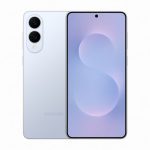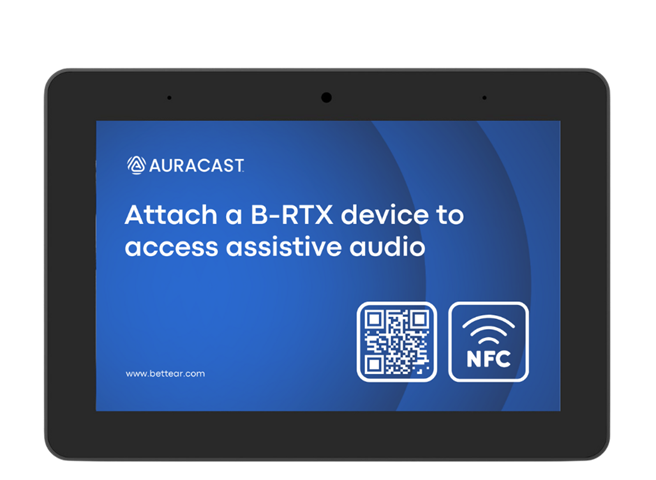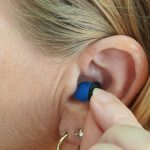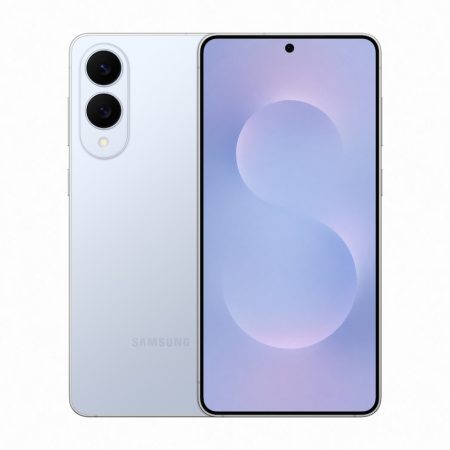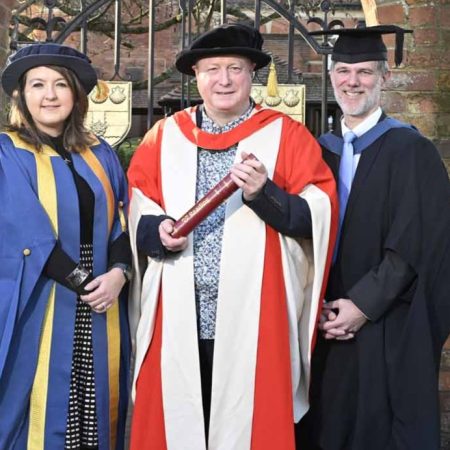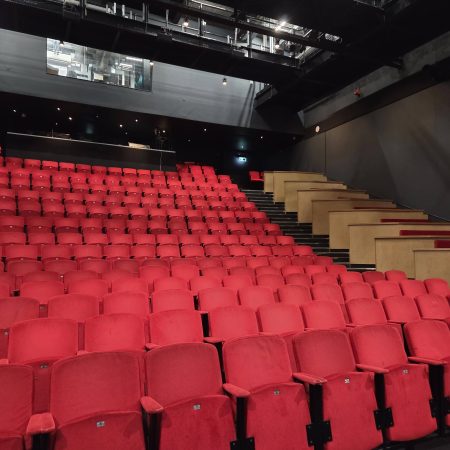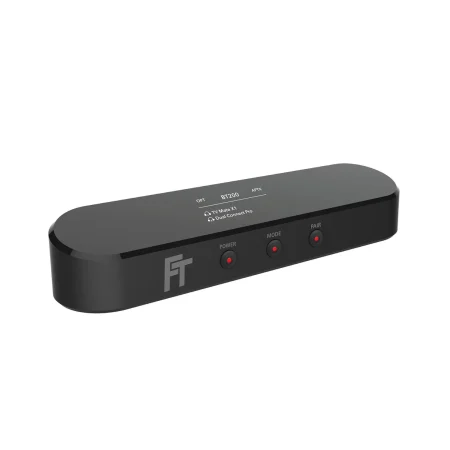How Bettear is using Auracast to transform public audio access – and take notes for you
When Bettear began working on Auracast solutions, the team weren’t just interested in the tech. They saw a chance to reimagine how people experience public audio, particularly those who often feel left out. It also led to them discovering additional and very different ways to use the tech, which are just as innovative and revolutionary.
Bettear describes itself as a company on a mission to revolutionise the way people with hearing difficulties experience everyday social activities and cultural events. Founded by Itamar Gabbay and Yami Thor in 2020, the firm utilises cutting-edge research and the latest tech to develop professional-grade audio streamers to help everyone, not just those with hearing loss.
Last year, the company started focusing on creating Auracast-enabled solutions. Using Bluetooth LE Audio technology, Auracast is designed to stream high-quality, low-latency audio to multiple users simultaneously, with a latency of less than 40 milliseconds, which is nearly instantaneous for the listener. It redefines accessibility in venues such as lecture halls, theatres, and cinemas, as well as times when a private connection is needed in a public place, such as a courtroom or a bank.
“Bettear is a unique company in the field of Auracast,” explains Ariel Caner, the company’s Business Development Manager. “We started from assistive listening, but we have found many other use cases and markets for Auracast, using other features.
“It very quickly became clear to us that Auracast can do so much more.”
The Bettear product line: built for real-world use
Bettear launched its first Auracast solution at the American Cochlear Implant Association conference held in Vancouver in July 2024. Using just one B-Caster – the company’s dedicated Auracast streamer – the spread of the signal went across an 80-by-80 metre hall with capacity for 1,200 people.
“We had one single Auracast streamer, which was able to cover the hall. That kind of performance was really impressive and unheard of before,” Ariel recalls, thinking of older technology such as the telecoil loop systems where people have to sit within a dedicated zone. It is this that Auracast will eventually replace.
Bettear’s Auracast product range cascades from the B-Caster, with each device designed to be practical, modular, and easy to deploy.
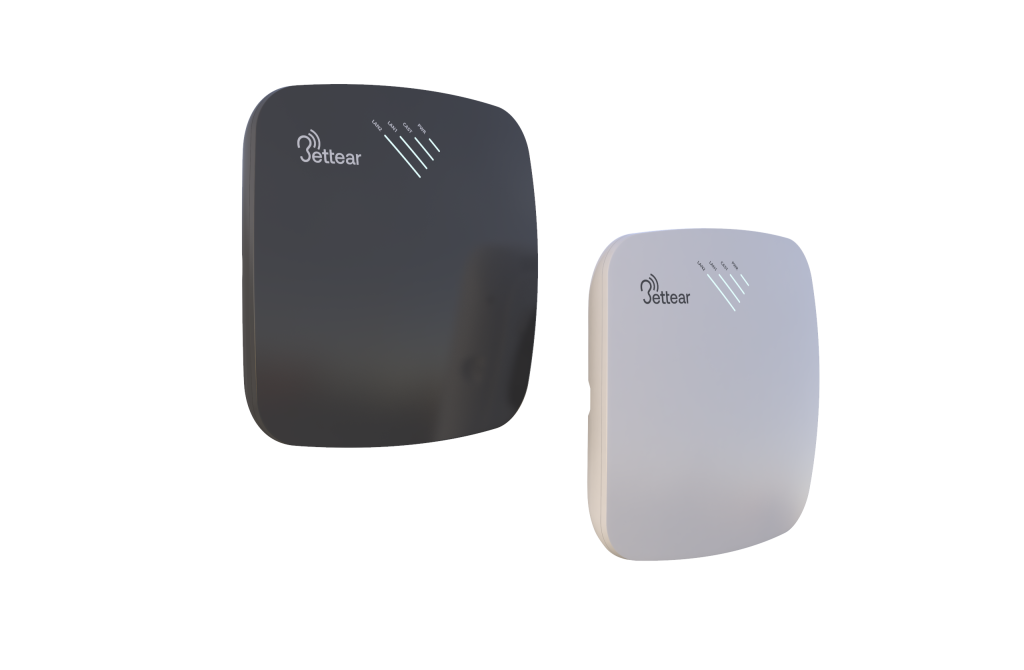
B-Caster
A powerful public venue streamer with near real-time audio streaming, cascadeable Power over Ethernet (PoE) capability allowing units to be daisy-chained around large venues to ensure complete signal penetration, and a dashboard that can be configured via a web-based app.
A free Auracast Assistant app available on some Android smartphones (including the Samsung Galaxy S23 Ultra, S24 and S25 series as well Google Pixel 8 and 9 series running Android 16) allows people utilizing Auracast-enabled hearables like hearing aids, cochlear implants or earbuds to tune in to an Auracast stream, and the B-Casters can stream high quality audio at different qualities to cater for the different end -user devices. Bettear makes use of its bespoke omnidirectional antennas into the kit.
Ariel says: “Our omnidirectional antennas, uniquely designed for our Auracast transmitters, are a great feature because they enable us to cover a really impressive range, usually around 100 metres. Latency-wise, we measured with professional equipment; between two items from our range, it is about 34 milliseconds, so less than the 40 milliseconds threshold.”
B-RTX
A transceiver that works as both a receiver (for listening) and a transmitter for tour guides and other people who need to walk and talk. It has a slot for an SD card reader so audio files can be easily accessed and transmitted over the Auracast stream – for example, a tour guide can share pre-recorded content or an art gallery might install NFC tags that are triggered as people get close to an exhibit, giving them an audio description of the painting and its history.
A display screen acts as an Auracast Assistant App, shows information in a similar way to a DAB radio, and it has easy volume controls and a long battery life.
It works in conjunction with the B-Caster Auracast streamer, as well as other Bluetooth-SIG certified Auracast transmitters, even with Auracast-enabled smartphones (e.g. Samsung or Google).
B-Smart Hive
A cradle that charges and configures multiple B-RTX units. These are slotted in and enable centralised control of the devices, while also ensuring their battery remains topped up when not in use. This means software updates can be quickly added, without having to manually adjust each B-RTX.
In addition, mass media files uploading, Auracast-related (e.g. stream names, passwords) mass configurations are efficiently handled.
B-Pass
This provides a secure audio streaming over Auracast in a system designed for courtrooms, banks and corporate spaces, with password protection and NFC authentication.
It works with Bettear’s B-RTX system, with the audio stream locked between the B-Pass and B-RTX in use. This prevents unauthorised access to confidential audio information, such as financial information, while ensuring the person accessing the stream can benefit from the clarity Auracast provides.
The password to access the Auracast is time-limited and can be regenerated regularly.
Simplifying Auracast access — one stream at a time
While Auracast is a promising standard, it is still early days in terms of adoption, with enabled devices slowly coming to market, including hearing aids, cochlear implants and headphones. Most smartphones do not yet support it natively, although that is beginning to change now that Android 16 is slowly appearing on Android-based mobiles.
“The Google Pixel 8 and 9, Samsung’s S23 and newer, and the Tab S9 series all support Auracast now,” Ariel says.
“We’re also seeing Android 16 roll out QR code connectivity, which makes joining a stream as simple as pointing your camera,” Ariel explains, adding that with the latter, the QR code will bring up a link that people can click on to connect their headset to Auracast streams.
Auracast offers a more streamlined listening experience compared to traditional Bluetooth connections. Rather than routing audio through a bridging device, Auracast enables a direct broadcast from the transmitter to the hearing aid or headset. Despite these advantages, Apple has yet to announce Auracast capabilities, and the updated Bluetooth functionality was missing from its recent announcements for the new iOS 26 reveal.
“Everyone is hoping the next iPhone includes it,” Ariel says. “There are strong rumours, but no official confirmation yet.”
To overcome limitations with phone compatibility, Bettear provides an elegant workaround—no modern smartphone required. Their dedicated devices, especially the B-RTX, empower users to discover and join Auracast streams even if their phones don’t support the protocol.
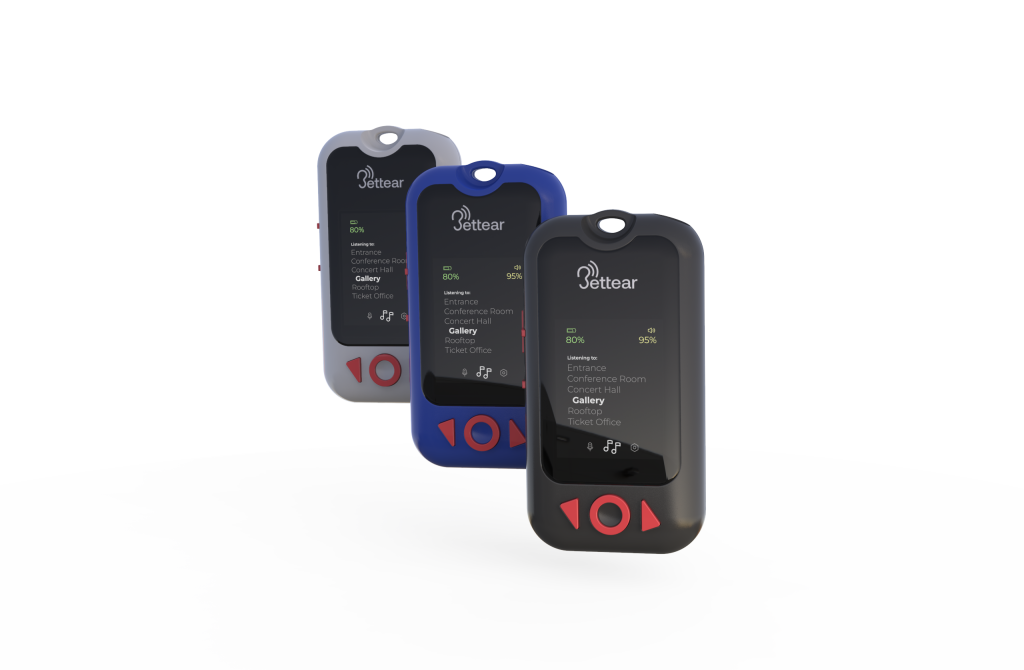
The B-RTX functions as a standalone Auracast receiver, listing available streams and transmitting audio directly through wired headphones or via a neckloop. This setup allows hearing aids or cochlear implants equipped with a telecoil to enjoy high-quality, low-latency sound—without relying on smartphone connectivity.
“Knowing the slow rate at which wearables with Auracast are coming to the market, we are advocating what we call a hybrid mode. We encourage our partners, owners and managers of venues to upgrade their existing assistive listening system with Auracast,” Ariel says.
“Any venue where there is an induction loop installed can be upgraded in minutes to Auracast, simply by duplicating the audio that goes into the induction loop and sending it to the Auracast streamer. Suddenly, you have another layer of assistive listening: the induction loop and the Auracast.
“Auracast will give better coverage and better sound quality, and this will cater for people with Auracast-enabled hearing aids and cochlear implants, offering direct streaming or, as mentioned above, to hearing aids and cochlear implants equipped with telecoil by using the B-RTX.”
“It is what we call a phased adoption. It will take some time until there is a massive number of devices supporting Auracast. We offer a way for an immediate upgrade to any assistive listening solution available in the market, especially the induction loop.”
This enables compatibility across a wide range of devices – from consumer earbuds to high-end hearing aids. And it makes setup flexible, even in tech-diverse environments.
Bettear’s devices can also integrate with off-the-shelf Wi-Fi access points, supporting simultaneous streaming via both Wi-Fi and Auracast. In larger venues, multiple B-Casters can be connected and cascaded via Ethernet, with power and audio passed through a single cable.
As an example, Ariel says that the company is currently working with a football stadium in Japan that has a seating capacity of 50,000. They are installing four to six B-casters to replace an old FM assistive system and will help football fans keep up with announcements and the latest commentary.
Beyond accessibility: Bettear’s tour guiding and speech-to-text tools
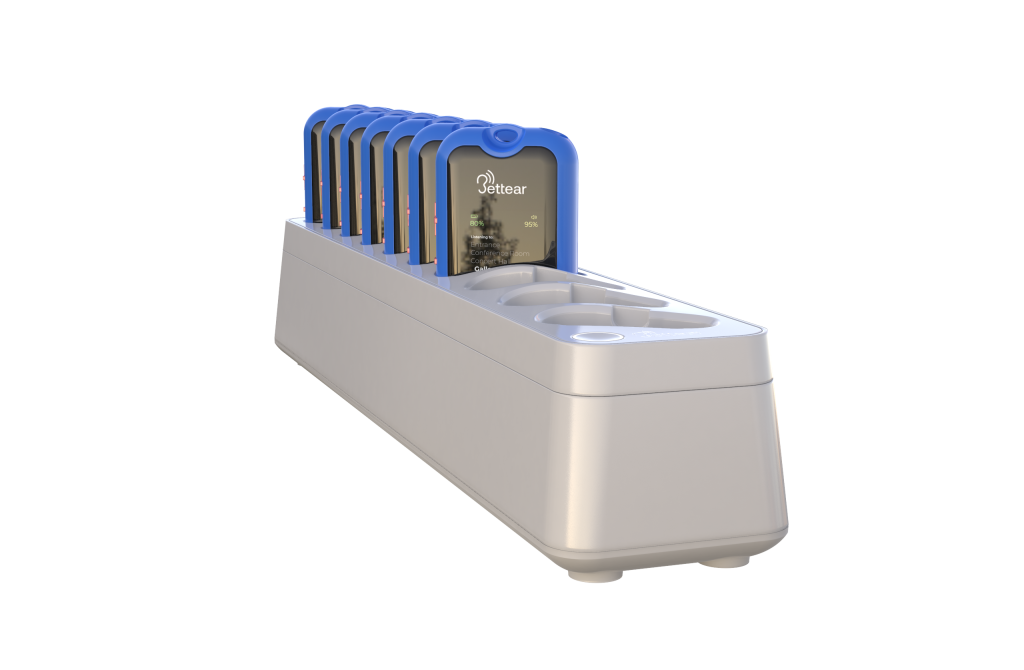
Ariel calls the B-RTX “a triple play” device that is one of its most innovative products: “It has many features. It is a receiver, and you can use wired headphones or a neck loop … turn it over and it has a switch that converts it into a transmitter, and it has a built-in assistant,” he explains. “The example we use is that of a tour guide.”
The B-RTX can connect to a microphone and stream a guide’s voice to a group of listeners using hearing aids, cochlear implants, earbuds, or other B-RTX receivers. Tour guides can also insert SD cards and play pre-recorded MP3 content, such as music or text, in multiple languages to support what is being said.
“We have created a whole new ecosystem, targeting tour guides for museum and visitor centres, and exhibitions, based on Auracast because of the sound quality, the low latency, and the distance the Auracast can travel.
“Bettear is the first and only company at the moment that has such a solution.”
And that’s in addition to the NFC circuitry already mentioned.
“You can go into a museum and wander around. If you are interested in one of the exhibits, there will be an NFC tag under it. Tap it with the B-RTX and it triggers the playing of an MP3 file for you,” Ariel says.
“We try and squeeze as many features into the product as we can … so we didn’t stop there.”
This next bit of technology will be a boon to anyone taking in any kind of talk and wanting to have a written record of it … or some form of instantaneous subtitles.
“The B-RTX features a USB-C port, allowing it to connect directly to a laptop and function as an Auracast-enabled sound card. The high-quality audio streamed through Bettear’s Auracast transmitter can then be routed into any word processing application with speech-to-text capabilities – transforming spoken content into written text instantly.
“So, if you are a student in a big lecture theatre and the lecturer is speaking quietly, you can listen to them via Auracast and, in the background, a mechanism will take notes for you.
“There is some latency due to the cloud-based speech-to-text mechanism, but it’s very accurate.
“Auracast is a great technology that can do more than assistive listening, like this speech-to-text.”
Ariel shares another example of the flexibility and adaptability of Auracast: mapping underwater reservoirs. A company Bettear works with is using the B-RTX to connect to a microphone and send the data via Auracast to a laptop.
“The whole process is much more efficient. Before, it was a microphone that recorded sound onto an SD card, which was then inserted into a PC and fed into special software. The B-RTX means this can be avoided,” he says of the near-instantaneous high-quality audio data transfer.
Bettear’s secure streaming solution for sensitive settings
Another important innovation is B-Pass – a device Bettear says it has developed in response to requests from legal institutions.
“This is yet another unique solution,” Ariel says of Bettear’s work. “Auracast offers encryption for audio, and the passwords can be between four and 16 characters.
“Towards the end of 2024, we received a request from one of our partners asking if we could offer a secure audio streaming solution for legal venues such as courtrooms. We thought about it and introduced the B-Pass, which looks like a small tablet.”
He cites an example of a court case where a judge declares the next to be sensitive, so the doors are closed as they do not want the audio to leak. An induction loop could cause people immediately outside the courtroom to pick up the audio. The B-Pass changes that.
With B-Pass, an usher or staff member uses an NFC tag to activate a secure Auracast stream. Passwords rotate automatically after 15 minutes of inactivity, and only authenticated receivers such as the B-RTX units can connect.
“We’re seeing interest from banks, corporate boardrooms, even cinemas,” Ariel says of the technology. “Some want to stop piracy. Others want a private, controlled audio channel.”
Regardless, it is a safe way of sharing the right audio and shows the flexibility of Auracast – combined with Bettear’s secure implementation. This is opening doors for the firm in environments that traditionally avoid wireless audio.
Global testing: planes, trains, stadiums – and opera houses
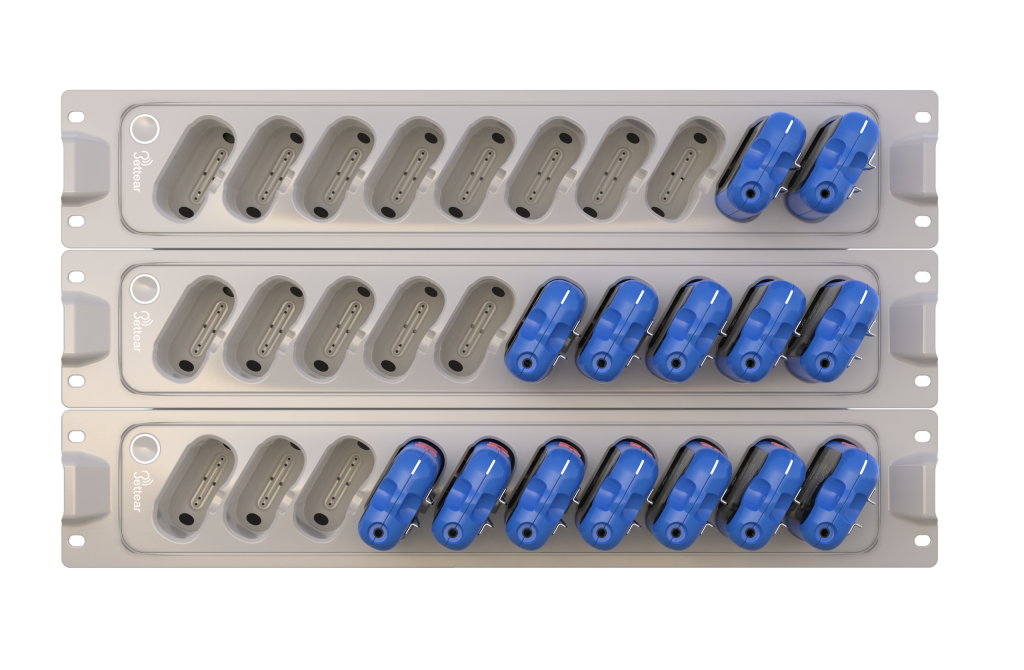
Ariel is constantly field-testing Bettear products wherever he is in the world, often carrying a B-RTX on flights, trains and stadium visits. He’s tried the system in the Real Madrid stadium, Japan’s bullet train, and even a passenger plane.
“I once gave an air stewardess a transmitter and asked her to read the menu,” he says. “I walked to the cockpit and could still hear her clearly.”
He notes that the 2.4 GHz band used by Auracast is permitted at low transmission power – just 10 dBm outside the US – making it safe and interference-resistant.
“On a plane, there are very few Wi-Fi networks in the air,” he says. “It’s a perfect environment for Auracast.”
Airports are more complex. “You have different announcements in each zone – boarding, check-in, security,” he explains. “So, we need a way to route the right stream to the right location. It’s possible, but it’s a challenge.”
The impact of Bettear’s Work — and what comes next
Bettear is already seeing meaningful results. In Tel Aviv’s opera house, where the firm installed a Wi-Fi-based assistive audio system, around 20 to 30 additional tickets are now sold per show, something Ariel says is a direct result of the firm’s accessibility solutions.
“These are people who hadn’t attended a performance in years,” Ariel says. “Now they can.”
For those with just a mild hearing loss who don’t need hearing aids, they can benefit from buying Auracast-enabled earbuds or headphones and enjoy the support of the clear audio stream coming into their ear canals.
“You won’t need to worry about where you are sitting, as it really doesn’t matter. Wherever you are, you get high-quality sound directly into your ears. This is the beauty behind assistive listening streaming systems,” Ariel says.
In another landmark project, Bettear helped install the world’s largest Auracast-based tour guide system in a national parliament building. Ten simultaneous tours can now run at once, each in a different language.
And Bettear has helped stream audio at a live music concert attended by 35,000 people. The team took hearing aids and earbuds to measure the distance from its Auracaster, giving it a map of the distance an Auracast can travel. Ariel says this was successful.
A similar success story was in a 1,200-seater university hall. Ariel sat in the back row, and the latency between Bettear’s products was just 34 milliseconds, meaning it was near instantaneous.
When he attended the Champions League Final in Munich a few weeks ago, he tried the B-RTX as a transmitter and receiver, measuring a distance of ~100 metres between the two products before the Auracast started to break up. Ariel says this was partly due to the test being in the open air, as there was nothing to block the signal. It is a good example of how Auracast could be deployed.
Bettear’s focus on universal access, hybrid flexibility, and practical usage is helping venues see the value in installing Auracast systems. This means the firm sees how the technology will be part of our everyday lives.
“This is what we do. We started from assistive listening and expanded sideways to tour guiding and secure Auracast streaming,” Ariel says. “And we are not stopping there. We have other products coming up, other solutions coming.”
It’s all ears for what Bettear has up its sleeves.


